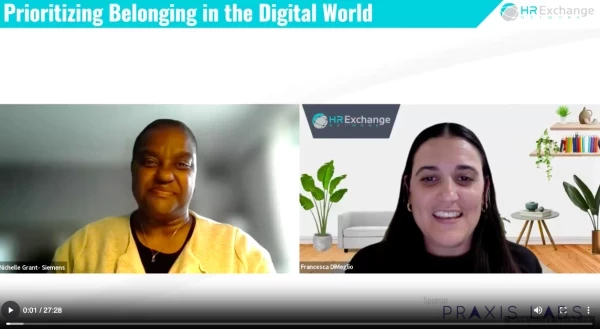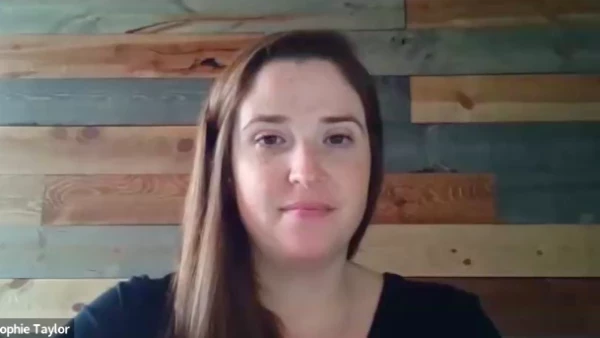Business Case for Diversity, Equity, and Inclusion (DEI)
How to Prove Diversity, Equity, and Inclusion Helps the Business
Add bookmark
Introduction to DEI
Diversity, equity, and inclusion (DEI) efforts are the right thing to do. Employers have a moral imperative to create psychologically safe workplaces that enable people to have healthy professional lives. The workplace should be welcoming to all. Certainly, HR leaders have the goal of helping people reach their full potential.
To their credit, most have recognized the need to level the playing field and help people fit in and find their purpose. HR’s crusade has led to better representation of marginalized groups and recognition that unconscious bias exists. They are pioneers in educating people about how to better relate to those who are different from them. They do not do this on their own. They often turn to diversity experts, who see this work as a calling and have made achieving equity and inclusion their life’s mission. In fact, as a result of the prompting by these leaders, “belonging,” helping people feel included, has become a top priority. Many, in fact, call it DEIB now.
After all, most people understand that diverse workforces provide a number of perspectives and points of view that can better inform creative processes and decision-making. If team members, who have different backgrounds and come from different places, can come together to meet common goals, their exchanges can be personally and professionally rewarding.
Of course, DEI strategy is more nuanced than hiring people from underrepresented groups, rolling out the red carpet, and hoping everyone plays nice. Despite all this progress, there is still much work to do. To help people flourish, employers must ensure that all workers have access to equal compensation, rewards, and opportunities. Everyone should have the chance to thrive and grow.
For any of this to happen, however, HR and diversity leaders need access to resources, which requires leadership buy-in. Because employees model the behaviors of their managers and executives, leadership must also demonstrate that DEI is a priority in their behavior and the actions they take.
That’s why HR and DEI leaders continue to make the business case for diversity strategies. In this report, experts weigh in on the debate about the best approach to getting everyone on board, why DEI is vital to the success of modern businesses, and how to move toward greater inclusion and belonging.
Read here about employee experience for the post covid world: https://www.hrexchangenetwork.com/employee-engagement/articles/employee-engagement-and-experience-for-the-post-covid-world-2
Should You Still Be Making the Business Case for DEI?
Asking whether to make the business case for DEI seems out of place in a report about the business case for DEI. However, the argument against the business case is springing up among diversity experts. Therefore, this is the elephant in the room that must be addressed.
In social media and at colleges and universities, activists are insisting that well-meaning diversity leaders stop defending an organization’s DEI mission. Not surprisingly, some people find it offensive that the need for initiatives designed to provide dignity and a sense of belonging requires financial justification.
In “Stop Making the Business Case for Diversity,” a recent article in Harvard Business Review, professors Oriane Georgeac and Aneeta Rattan, point out that 80% of Fortune 500 companies explain their interest in diversity by showing how such efforts influence the bottom line. They say there are no hard data points to directly connect DEI initiatives and business goals.
“…To achieve the best results, they should consider not making any case at all.”
“After all, companies don’t feel the need to explain why they believe in values,such as innovation or resilience or integrity. So why treat diversity any differently?”
-Oriane Georgeac and Aneeta Rattan
Employee Engagement is one of the top metrics HR regularly measures. In the latest report from the HR Exchange Network, an in-depth look at the importance of engagement in the employee lifecycle and the role data plays in the strategy.The Intersection of Employee Engagement and Business Success

In another Harvard Business Review article, “Getting Serious about Diversity: Enough Already with the Business Case,” academics Robin J. Ely and David A. Thomas take the argument further. They suggest that employees who constantly see their employer aligning diversity efforts with positive business outcomes will question whether anyone cares about them. This can breed resentment, which leads to low morale and attrition.
The main premise of Ely’s and Thomas’ article is that making the business case for diversity makes it seem like gaining more representation in the office is enough. Yet, they rightfully point out that representation is the bare minimum. Instead, companies must prescribe “the learning-and-effectiveness paradigm,” which dates back to 1996. It refers to the pair’s findings that companies with diverse workers, who tapped into their identity-related knowledge and experiences, could learn how the organization could better perform its core work.
Farzana Nayani, author of The Power of Employee Resource Groups: How People Create Authentic Change, recognizes the feelings some have about the business case but considers it a must in building enduring DEI strategies.
“There’s recent research that shows that people of color and indigenous people are not responding well to the business case, because it may seem performative to keep talking about it and not see the action.”
“Also, if it’s quantified in a way that’s only business or bottom line related, it means that there’s a lack of care for the people… It really ties into how all of this has been presented, and to make sure that it’s not just a numerical value, but there are these tangents of categories, where the impact can take place for organizations.”
-Farzana Nayani
Why Do Businesspeople Still Make the Case for DEI?
When talking to business leaders on the ground, they will tell you that the business case for DEI is still necessary. The majority of HR leaders who interact with HR Exchange Network disagree with the HBR academics and take the position of Nayani. Virtually all the guests at the HR Exchange Network DEI event in 2022 said that everyone takes his or her own personal diversity journey. What they mean is that some people are just starting to understand what DEI means and why it is necessary, while others have educated themselves and are full-fledged activists.
As a result, the DEI leaders must meet each person wherever he or she is on the road to enlightenment. This may require educating someone and creating a safe space to discuss why this is important, how it can benefit the individual and the team, and what can be gained from continuous work on DEI efforts. Thus, they find themselves making the business case. They also simply want to ensure leadership buy in and enduring commitment. That requires providing them with motivation to stay focused on diversity and inclusion.
In addition, as CHROs, CPOs, and Chief Diversity Officers have gained seats in the C-suite, they have continued to demonstrate their roles as business partners. As a result, they want to align all talent management pillars, including DEI, to the greater business strategy. A lack of transparency and misunderstandings about what DEI strategy is can result in pushback says Lynn K. Sitanimezi, Director, Organizational Development at Driven Aligned Leadership Group.
“You can hire diverse people, but it doesn’t mean you’re inclusive.”
“What is being done wrong is still that checkbox. I still see it. What is being done right is that I am seeing a lot of leaders now study and listen. They say, ‘Tell me more. I am here, I need to listen. How does this affect me personally and how does it affect my business?’”
-Lynn K. Sitanimezi
In fact, when she begins working on DEI with leaders, she tries to create a greater understanding around why DEI is important. Sitanimezi takes them through exercises that help them identify personal experiences related to DEI. She calls it their “personal why.” The goal is to create a connection with diversity efforts, and it is the first step, she says, in proving the business imperative of diversity and inclusion.
How to Make the Business Case for DEI?
Getting the attention of leadership and educating executives is the preliminary stage as Sitanimezi describes it. To begin, companies can look at the current landscape and the desires of job candidates and employees during this era of the Great Resignation. In fact, 76% of employees and job candidates said a diverse workforce was important when evaluating companies and job offers, according to Glassdoor.
In the meantime, about 20 million workers quit their jobs in the United States in 2022. As a consequence, HR leaders are focused on employee engagement and experience. Indeed, it is the number one priority, with 30% of the vote, among the respondents of the HR Exchange Network’s latest State of HR survey.
This is smart leadership on the part of Human Resources. After all, turnover can cost employers 33% of an employee’s annual salary, according to the Work Institute’s 2017 Retention Report. By many accounts, it takes about six to eight months for a new hire to reach full productivity.
Other data further illustrates the need for DEI initiatives. McKinsey & Company has conducted a series of research reports on the business case for diversity. In the most recent article, “Diversity wins: How inclusion matters,” the researchers concluded that diverse teams influence the bottom line.
“The most diverse companies are now more likely than ever to outperform less diverse peers on profitability,” according to McKinsey.
When making the business case to leaders, HR professionals should also look at internal data and evidence. This can come from a number of sources, including surveys, observations, focus groups, or one-on-one interviews.
“If you’re seeing retention compromised, in pulse engagement surveys, because people don’t feel they belong, then you know something needs to be done.”
“The other point is when the stories are told from the employees themselves. If someone is talking to you about anti-Blackness in the workplace or in society or anti-Asian racism and the violence and harm it has caused and how it’s affecting them at work, then it really makes sense for you to address those things. Make sure there is not a state of harm being done intentionally or unintentionally. We’re talking about seeing the value of people, business case or not.”
-Farzana Nayani
After working with leaders to make a connection between their lives and DEI efforts, Sitanimezi, conducts exercises to demonstrate the usefulness of these strategies.
“I use a lot of liberating structures when I do my presentations.”
“Liberating structures are exercises that help people put themselves in someone else’s shoes. For example, DEI is different for someone who is a white male, who has not experienced what a Black man or woman has experienced. For me, it’s also about going through values exercises to help them understand how their personal values can align with diversity, equity, and inclusion because nobody wants to be labeled as not being an inclusive leader or being a racist leader.”
-Lynn K. Sitanimezi
In these scenarios, one-on-one or small group coaching are the keys to educating leadership about why diversity is vital. Connecting the dots between business objectives and creating diverse teams in an inclusive environment, where people feel a sense of belonging, is the essence of presenting the business case for DEI. Like everything else, people are willing to make change and do the work if they understand how their efforts can impact them personally.
Read here about Pros and Cons of Labor Unions: https://www.hrexchangenetwork.com/hr-compensation-benefits/articles/pros-and-cons-of-labor-unions
What are some of the Best Practices for DEI?
Making the business case for DEI is not a one-time happening. Leaders in the space say they have to continuously remind people why this is important. They must regularly assess how diversity and inclusion is being integrated and practiced across functions and departments. Of course, they have to adapt to what they find and make a long-term commitment to doing the work.
More and more emphasis is being put on diversity and inclusion in today’s world, but what does that mean for HR? In this definitive guide, read about the current state of affairs, potential strategies and the rewards associated with an effective strategy.Diversity and Inclusion: HR’s Guide to a Successful Strategy

Here’s a checklist to help HR leaders get started in their DEI journey:
- Assess the organization’s DEI needs
What is representation like for underrepresented groups? How do employees from often-marginalized groups feel about their employee experience? Are there employee resource groups working on making change? Is there representation in leadership? If not, how should HR develop talent pipelines that integrate DEI? How can HR support those in the organization, who are focused on DEI? What else is needed to make DEI strategy a priority?
- Gather data and evidence
Before HR leaders can ask executives to support DEI efforts, they have to be ready to answer questions about why they should allocate resources and time to this work. While making the argument, diversity leaders should point to the moral imperative and the bad PR that is a consequence of both apathy or toxicity. However, they should also demonstrate the benefits, including improved retention, which saves money, more creative problem-solving, and richer employee experiences.
- Make connections to the bottom line
Businesses need to profit to stay open. Therefore, executives must justify any allocation of resources even if doing the right thing should be enough. As a result, making an effective business case for DEI requires showing the links between increased representation and improved inclusivity with better business outcomes.
- Draw on the personal
Meet people where they are in their individual DEI journey. Help them understand how to improve communication with those who are different from them and how to collaborate in a way that brings out everyone’s unique perspective and fullest potential.
- Continuously make the business case
DEI leaders must continue to show the need for working on diversity and inclusion. They must regularly assess what is happening on the ground and how employees feel. Then, they must tweak DEI strategy and initiatives accordingly. Having a Chief Diversity Officer or a DEI Council, as Nayani suggests, can help organizations oversee their efforts and maintain consistency. Simply put, the work of DEI is never done.







































































































































